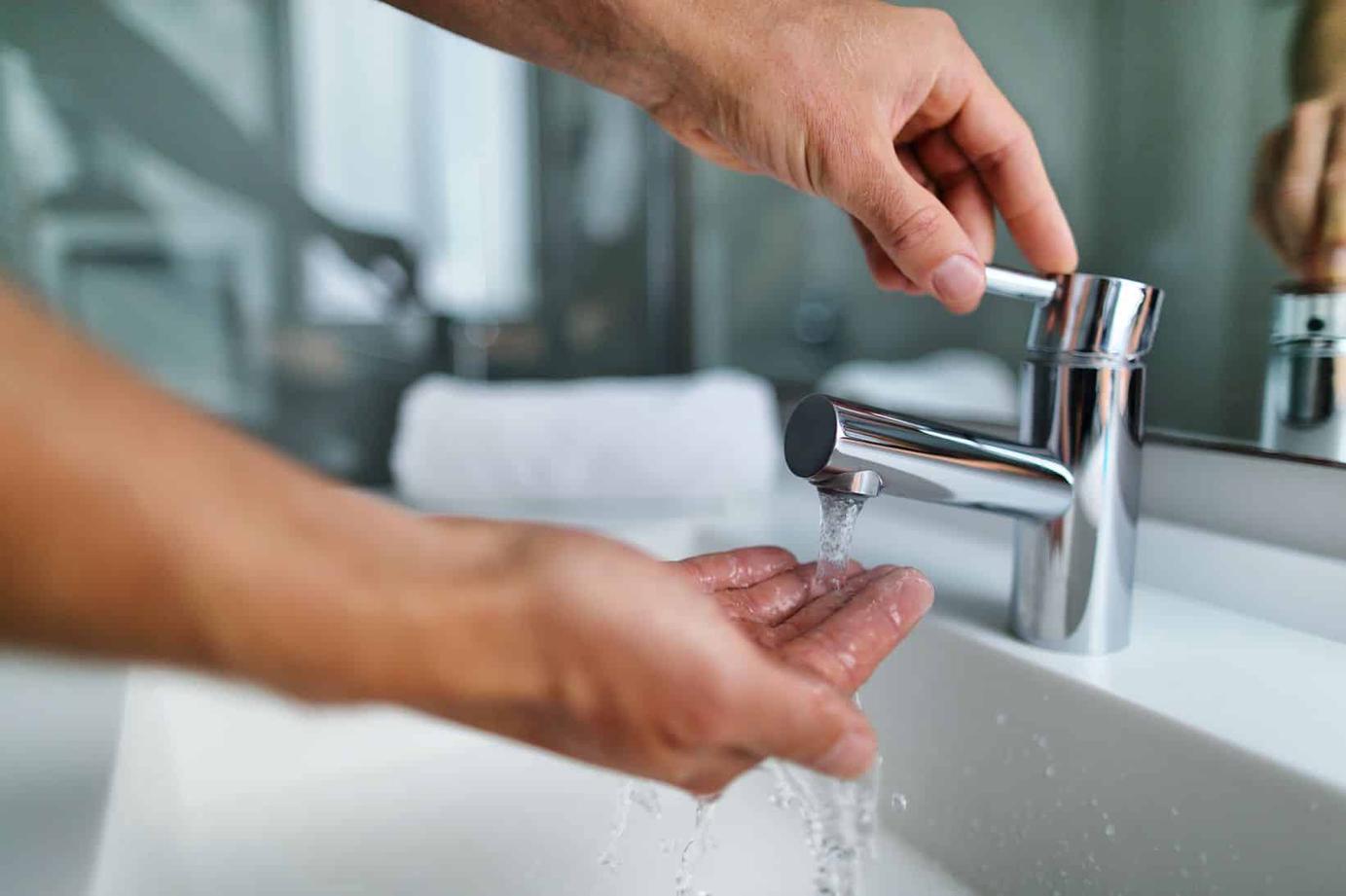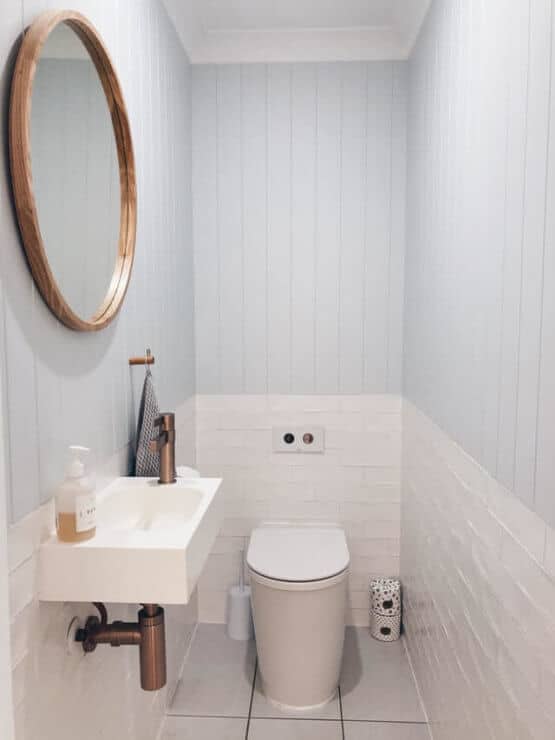You’ve spent hours, maybe even days, dealing with faulty plumbing. Finally, the plumber has gone away, your pipes are almost brand new, but – there is still low water pressure after plumbing repair. Why does this happen?
Water pressure issues present themselves in various ways, and all are equally frustrating.
You might have a faucet that takes forever to fill a bathtub, or a showerhead with such a weak spray that you might not be able to shower properly. What ever might be, it’s even more stressful when this persists after a plumber has just gone away.
So, what can cause low water pressure after plumbing repair? Here are a few possible causes.
Cause of Low Water Pressure After Plumbing Repair

Between flushing the toilet, showering, and running the dishwasher, the average US family spends about 300 gallons of water daily. At the same time, the average water pressure inside the home is 40-45 PSI (pounds per square inch).
When there is a low water pressure in neighborhood, it’s easy to see why this would disturb a lot of people.
However, what can you do when only you experience low water pressure after plumbing repair?
The truth is, the timing is usually a coincidence and there is some other cause behind this. Usually, the reason is one of these:
- There is an issue with your water supplier
- Changed city regulations
- The shutoff valve isn’t fully opened
- The water meter valve isn’t properly opened
- Failure of the pressure regulator
- Clogged pipes
- Corroded pipes
- Pipe leak
- Faulty fixtures
- Shared pipelines
We’ll go over all of them in greater detail.
- There Is an Issue with Your Water Supplier
When there is a sudden low water pressure in house, try asking around before you call a plumber or turn the valves on and off. If your neighbors are having the same issue, the problem likely lies with your water supplier. Try contacting them and getting the information whether they are aware of the water pressure problem or if they are trying to fix it.
- Changed City Regulations
If you aren’t the only one experiencing low water pressure in apartment but the water supplier has nothing to do with this, the chances are your district or the entire city has changed some water regulations. Once this happens, the water supplier has to comply.
On such occasions, there is nothing you can do except to install a water pressure booster system. These systems should be installed by a professional, as they aren’t adequate for novice tinkerers.
In some areas, you might be required to call an inspector who will make sure everything is in working order.
- The Shutoff Valve Isn’t Properly Opened
When you’re the only one experiencing water pressure issues, it’s time to look inside your own property for the cause.
A common reason for low water pressure after plumbing repair is, actually, a shutoff valve that isn’t properly opened. Many home owners aren’t certain of what the main shutoff valve is and how to open it all the way.
After repairs, chances are that you or the plumber haven’t opened the shutoff valve as is necessary.
Locate your house’s shutoff valve. It’s usually inside your property, where the city supply pipe enters the house. Make sure the handle is turned clockwise all the way. If it has a lever, it has to be parallel to the pipe. Anything other than that means that it isn’t opened appropriately.
- The Water Meter Valve Isn’t Properly Opened
This is the second valve that controls the water intake. It belongs to your water supply company, so chances are you’ve never dealt with it directly. However, plumbers might sometimes close it during repairs, causing water pressure to drop. If there is no water pressure after turning water back on, this is likely the issue.
Keep in mind that this valve is challenging to reach, so your best shot would be to contact your plumber or even the water supply company itself. Someone should come to fix this for you if it’s too hard for you to find it.
- Failure of the Pressure Regulator
If you have a pressure regulator, it might be failing. When this happens, it shows an inaccurate pressure read. To check this out, get a water pressure gauge and attach it to an outside hose spigot.
Then, look at it for the precise reading. If it doesn’t match the pressure regulator, then the issue might be within the unit. You can replace a pressure regulator on your own, or you might contact a professional.
- Clogged Pipes
While pipes usually clog beneath drains, this isn’t always the case. Clogs can happen even deep within your piping. If you have a low water pressure in shower only, then the clog is local.
However, if there is low water pressure in all of your faucets, the clog is likely deep beneath your house. If someone damaged water pipe line, sediments or ground may be in your pipes.
While there are many remedies for clogged drains, if none of them work, you might want to contact a plumber as the problem is probably more complicated.
- Corroded Pipes
If you have galvanized steel, brass, or copper pipes, you should know that they come with an expiration date. Many will corrode after just 20 years. If you have an old house, this is likely the issue.
Related: Removing Rust From Inside Pipes
Corrosion cannot be seen from the outside. Look at your property’s or city’s records to see how old your plumbing is. This is especially the case if you experience any other corrosion symptom, such as:
- Discolored water
- Odor
- Unusual taste
- Noises
- Fluctuations in temperature
- Leaky pipes
Unfortunately, only a professional can properly deal with corroded pipes.
- Pipe Leak
Most pipe leaks are easy to notice. However, not every leak is followed by a noticeable flood. Sometimes, the leak might happen underneath the bathroom floor or outside of your house.
Try to locate the leak by searching for wet spots or pools of water. Try to figure out which pipe is leaking.
For a quick fix, you should turn off the water supply and dry the pipe’s outside. Then, take a rubber patch and wrap it around the cracked spot. Attach it with a pipe repair clamp and an electrical tape.
This will keep the pipe from leaking until the plumber arrives.
- Faulty Fixtures
If only one faucet has a water pressure issue, then the problem likely lies with that faucet itself. Most of the time, the problem is in the faucet’s aerator. The aerator can get clogged with limestone and dirt, or it can rust.
Remove the aerator and check it out. Clean it up if you need to, then return it. This should normalize the water pressure. Sometimes, the fixtures themselves can get clogged or break.
If this is the case, don’t bother cleaning it. A much cheaper solution is to simply get a replacement one.
- Shared Pipelines
There is another cause behind low water pressure in bathroom or kitchen. Sometimes, the pipeline gets shared between two or even more households.
If this is the case, you might notice a lower water pressure when your neighbor is using water excessively. This is similar to experiencing a low water pressure when using two faucets. This time, however, the person who is using the water lives next door.
One of the ways to deal with this is to change your schedule a bit so you and your neighbor don’t use water at the same time. Another option is to replace your pipes, which is expensive, but it might be more useful in the long run.
- Water Heater Problems
Water heater issues can contribute to low water pressure. Sediment buildup in the tank, a faulty pressure relief valve, corroded or damaged pipes, an undersized water heater, or thermostat problems can all result in reduced pressure.
Regular maintenance, including flushing the tank and inspecting components, helps prevent issues and ensures proper water pressure in your home. If you suspect water heater-related problems, consulting a professional plumber is advisable for prompt resolution.
Related: House Water Pressure At 100 psi
The Bottom Line
Most of the time, when you have a low water pressure after plumbing repairs, the problem didn’t happen because of the said repairs.
It’s important to locate the cause of the problem. Is there an issue with just one faucet, or does this happen in your entire property? Do your neighbors experience the same issue? Once you find this out, you can start working on dealing with the issue.
Usually, you’ll have to call a professional. Plumbing repairs are challenging. If you’re inexperienced, you might cause more damage than good.
Read Next: No Water Pressure in Shower But Plenty Everywhere Else

Michael Davis is a heating & plumbing expert who currently works as independent contractor in SC. He also writes for Plumbertip.
For almost 10 years he worked on various plumbing tasks across South Carolina.






